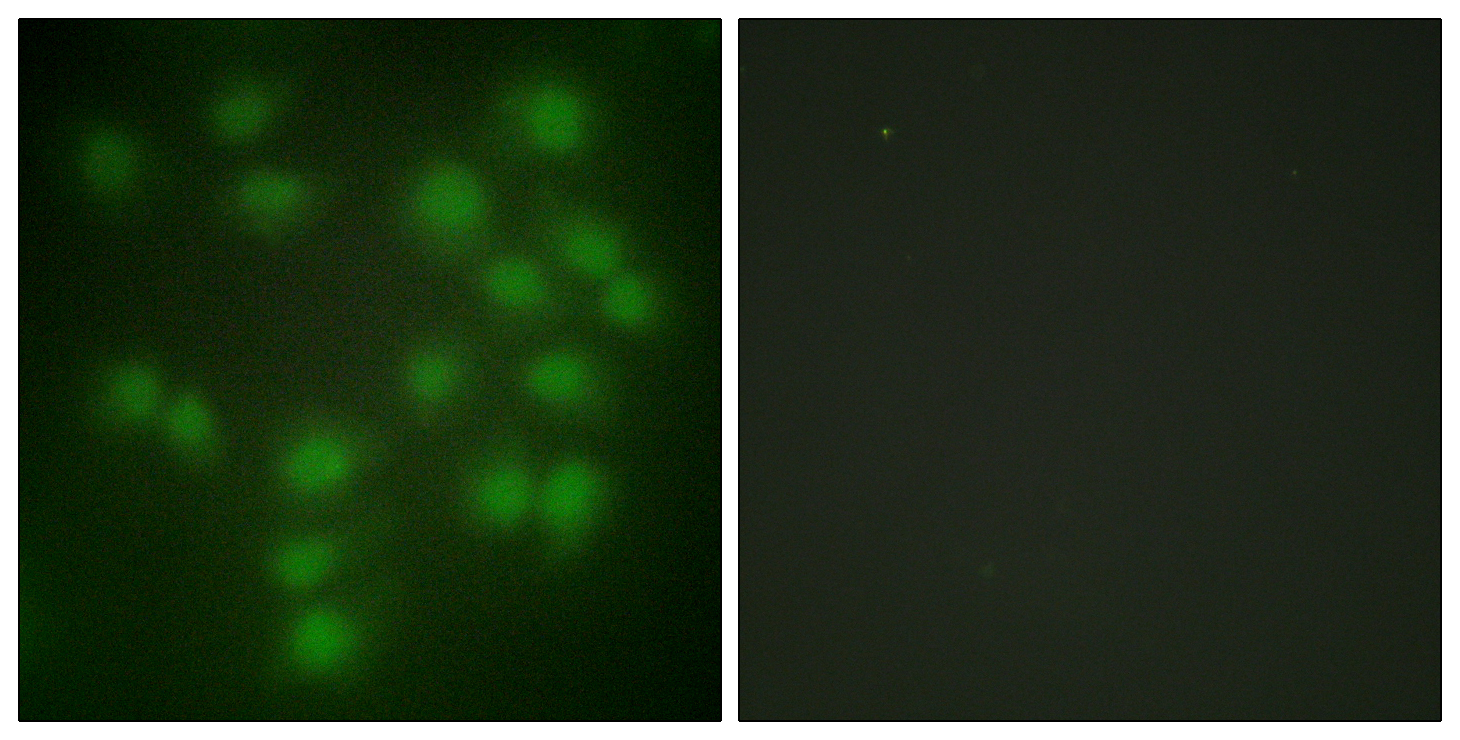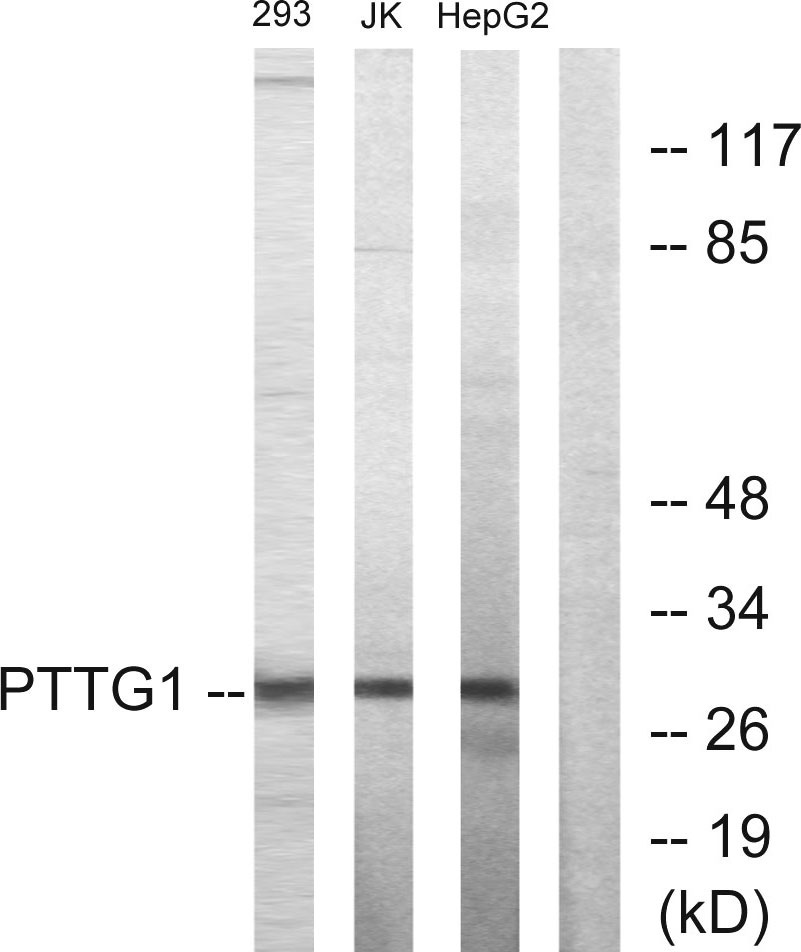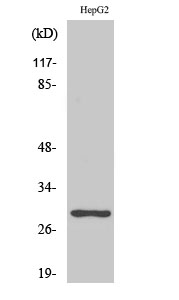产品名称
PTTG1/2/3 Rabbit Polyclonal Antibody
别名
PTTG1; EAP1; PTTG; TUTR1; Securin; Esp1-associated protein; Pituitary tumor-transforming gene 1 protein; Tumor-transforming protein 1; hPTTG
存储缓冲液
Liquid in PBS containing 50% glycerol, 0.5% BSA and 0.02% New type preservative N.
Human Gene Link
http://www.ncbi.nlm.nih.gov/sites/entrez?db=gene&term=9232
Human Swissprot No.
O95997
Human Swissprot Link
http://www.uniprot.org/uniprotkb/O95997/entry
Mouse Swissprot No.
Q9CQJ7
Mouse Swissprot Link
http://www.uniprot.org/uniprot/Q9CQJ7
免疫原
The antiserum was produced against synthesized peptide derived from human PTTG1. AA range:111-160
特异性
PTTG1/2/3 Polyclonal Antibody detects endogenous levels of PTTG1/2/3 protein.
稀释度
WB 1:500 - 1:2000. IHC 1:100 - 1:300. IF 1:200 - 1:1000. ELISA: 1:20000. Not yet tested in other applications.
宿主
Polyclonal, Rabbit,IgG
背景介绍
The encoded protein is a homolog of yeast securin proteins, which prevent separins from promoting sister chromatid separation. It is an anaphase-promoting complex (APC) substrate that associates with a separin until activation of the APC. The gene product has transforming activity in vitro and tumorigenic activity in vivo, and the gene is highly expressed in various tumors. The gene product contains 2 PXXP motifs, which are required for its transforming and tumorigenic activities, as well as for its stimulation of basic fibroblast growth factor expression. It also contains a destruction box (D box) that is required for its degradation by the APC. The acidic C-terminal region of the encoded protein can act as a transactivation domain. The gene product is mainly a cytosolic protein, although it partially localizes in the nucleus. Three transcript variants encoding the same protein have been fo
组织表达
Expressed at low level in most tissues, except in adult testis, where it is highly expressed. Overexpressed in many patients suffering from pituitary adenomas, primary epithelial neoplasias, and esophageal cancer.
信号通路
Cell_Cycle_G1S;Cell_Cycle_G2M_DNA;Oocyte meiosis;
功能
developmental stage:Low level during G1 and S phases. Peaks at M phase. During anaphase, it is degraded.,disease:Has strong transforming capabilities on a variety of cell lines including NIH 3T3 fibroblasts and on athymic nude mice. Overexpressed in many patients suffering from pituitary adenomas, primary epithelial neoplasias, and esophageal cancer. No mutation in the coding sequence has been observed. The transforming capability may be due to its interaction and regulation of TP53 pathway.,domain:The N-terminal destruction box (D-box) acts as a recognition signal for degradation via the ubiquitin-proteasome pathway.,function:Regulatory protein, which plays a central role in chromosome stability, in the p53/TP53 pathway, and DNA repair. Probably acts by blocking the action of key proteins. During the mitosis, it blocks Separase/ESPL1 function, preventing the proteolysis of the cohesin complex and the subsequent segregation of the chromosomes. At the onset of anaphase, it is ubiquitinated, conducting to its destruction and to the liberation of ESPL1. Its function is however not limited to a blocking activity, since it is required to activate ESPL1. Negatively regulates the transcriptional activity and related apoptosis activity of TP53. The negative regulation of TP53 may explain the strong transforming capability of the protein when it is overexpressed. May also play a role in DNA repair via its interaction with Ku, possibly by connecting DNA damage-response pathways with sister chromatid separation.,PTM:Phosphorylated at Ser-165 by CDC2 during mitosis.,PTM:Phosphorylated in vitro by ds-DNA kinase.,PTM:Ubiquitinated by the anaphase promoting complex (APC) at the onset of anaphase, conducting to its degradation.,similarity:Belongs to the securin family.,subunit:Interacts with RPS10 and DNAJA1 (By similarity). Interacts with the caspase-like ESPL1, and prevents its protease activity probably by covering its active site. Interacts with TP53 and blocks its activity probably by blocking its binding to DNA. Interacts with the Ku 70 kDa subunit of ds-DNA kinase. Interacts with PTTG1IP.,tissue specificity:Expressed at low level in most tissues, except in adult testis, where it is highly expressed.,tissue specificity:Expressed at low levels in the pituitary, liver, spleen, prostate, testis, ovary, small intestine and colon. Also expressed in various pituitary, testicular, liver and ovarian tumors.,
纯化
The antibody was affinity-purified from rabbit antiserum by affinity-chromatography using epitope-specific immunogen.



